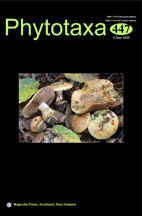Abstract
Photinia, Stranvaesia and Heteromeles are considered to be related genera belonging to the tribe Maleae of Rosaceae. Stranvaesia comprises five species distributed in eastern Asia while Photinia consists of about 30 species found in eastern Asia and Mexico. Heteromeles is a monotypic genus distributed in northwestern Mexico and southwestern US. Distinctions between these three genera rely on morphological features of leaves, flowers, and fruits, but some character states that are supposed to be diagnostic of Stranvaesia also occur in species of Photinia. In order to clarify the taxonomic delimitations of the three genera, sequences from one nuclear gene (PepC) and three intergenic chloroplast DNA regions (trnS-trnG, psbA-trnH and trnL-trnH) were used to estimate the phylogeny of Photinia, Stranvaesia and Heteromeles. All Maximum parsimony, maximum likelihood, and Bayesian analyses supported the conclusion that the evergreen species Stranvaesia davidiana should be merged into Photinia, and another two deciduous species S. amphidoxa and S. tomentosa should be transferred to the genus Pourthiaea. Additionally, one Photinia species P. bodinieri should be transferred into Stranvaesia. Finally, it is suggested that Heteromeles arbutifolia should be merged into Photinia. Taxonomic treatments have been made to those species mentioned above, three new combinations have been proposed and six lectotypes have been designated here.

